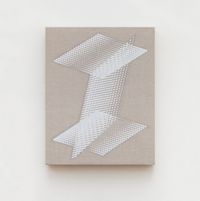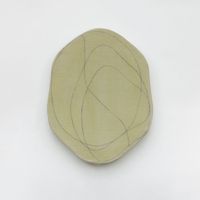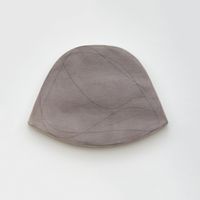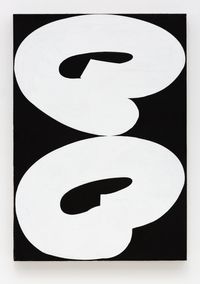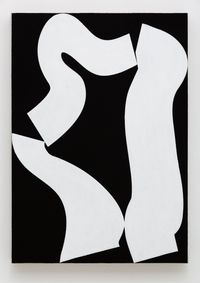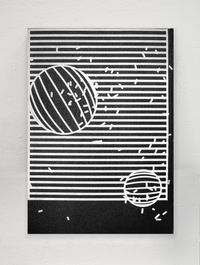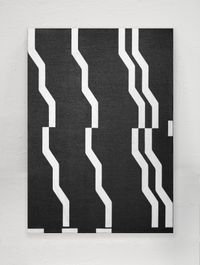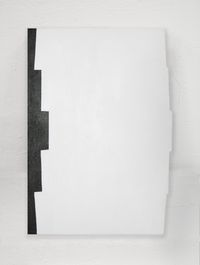In a practice encompassing tinted photographs, shaped canvases, prints, and paintings, Genevieve Chua explores the progression of time and processes through her engagement with natural phenomena and the human body.
Read MoreGenevieve Chua's early series 'After the Flood' (2010–ongoing) features black-and-white photographs of Adinandra Belukar, a species-poor forest dominated by Adinandra dumosa (Theaceae) found in Singapore and southern Peninsular Malaysia. The artist hand-coloured parts of the photographs to denote a weed known to envelop other vegetation. In an interview with STPI in 2020, Chua said that she had been interested in how the weed 'makes a phantom of the object it shrouds', embodying the amount of time it had been allowed to grow.
Parallels between natural phenomena and the human body are recurrent themes in Genevieve Chua's work. In her 'Ultrasound' series (2012), Chua transferred the sounds of rushing water into dots, screen-printing them on linen to create subterranean scenes that evoke ultrasound images of the womb. The human pelvis and its evolution form the crux of Parabola #1 (2014): a series of roughly oval-shaped canvases in arrangements evoking museum specimen classifications.
The 'Edge Control' series—one of Genevieve Chua's most well-known works—has been ongoing since 2016 and typically consists of black-and-white paintings featuring sharply delineated edges and diagrammatic or grid-like forms. Soft, curving shapes emerge out of and disappear into the harsh grid in Edge Control #15, Soft Diplomacy (2017), while the shaped canvas of Edge Control #25, Hard Diplomacy (2019) is composed of three parallel undulating forms.
For Closed during opening hours (2019)—her solo exhibition at the Earl Lu Gallery of the Institute of Contemporary Arts Singapore—Chua shut the gallery down for the duration of the show. As a result, the exhibition was accessible only through the façade of the gallery, which eschewed the audience's vision and compelled viewers to use their minds to make conjectures about the artworks inside.
In 2019, Genevieve Chua undertook her second residency at STPI, which gave rise to her largest solo exhibition to date: Twofold (2020). The new print-based works and paintings from the 'Edge Control' and 'After the Flood' series, which were the outcome of this residency, attempt to expand the modalities of painting, engaging with what Chua describes in a video as 'the spectrum of non-colour or the warmth of [black and white]'.
Genevieve Chua studied for a Diploma in Painting at LASALLE College of the Arts, Singapore (2004), and holds an MA in Painting from London's Royal College of Art (2018). In 2012, she was the recipient of the Young Artist Award by the National Arts Council, Singapore.
Twofold, STPI, Singapore (2020); Closed during Opening Hours, Earl Lu Gallery, Institute of Contemporary Arts Singapore (2019); Vestigials and Halves, Project 7 ½, Seoul (2017); Rehearsals for the Wilful, Silverlens Galleries, Manila (2016); Moths, Gallery EXIT, Hong Kong (2015); Parabola, Tomio Koyama Gallery, Singapore (2014); Cicadas Cicadas, Gusford Gallery, Los Angeles (2014).
First Light, Yavuz Gallery, Sydney (2020); Matter and Place, Museum MACAN, Jakarta (2019); Choruses 副歌, Edouard Malingue Gallery, Hong Kong (2018); Shared Coordinates, The Arts House, Singapore (2017); I went to the forest to live deliberately, Artinformal, Manila (2015); Unearth/ed, Singapore Art Museum (2014).
Sherry Paik | Ocula | 2021
